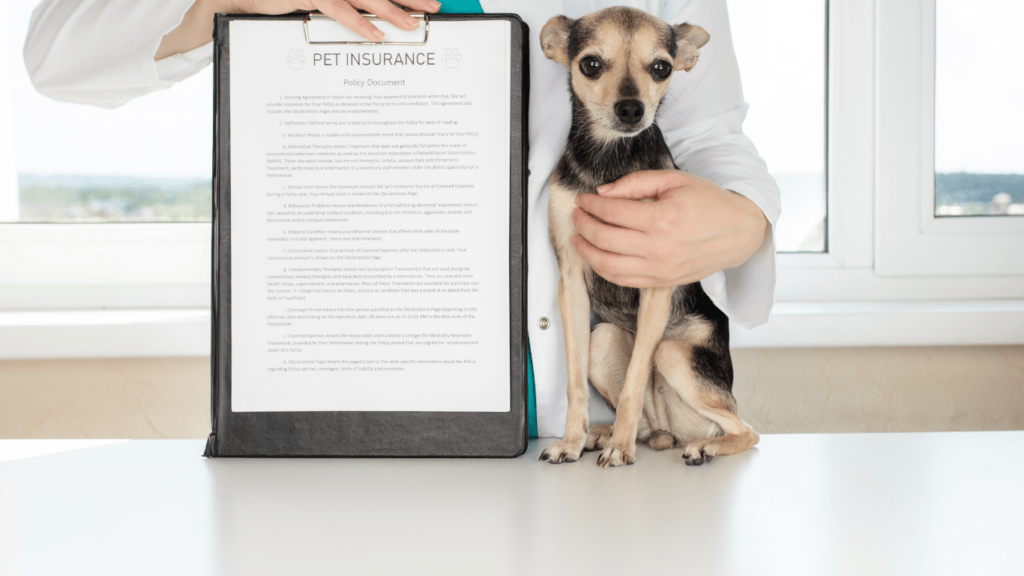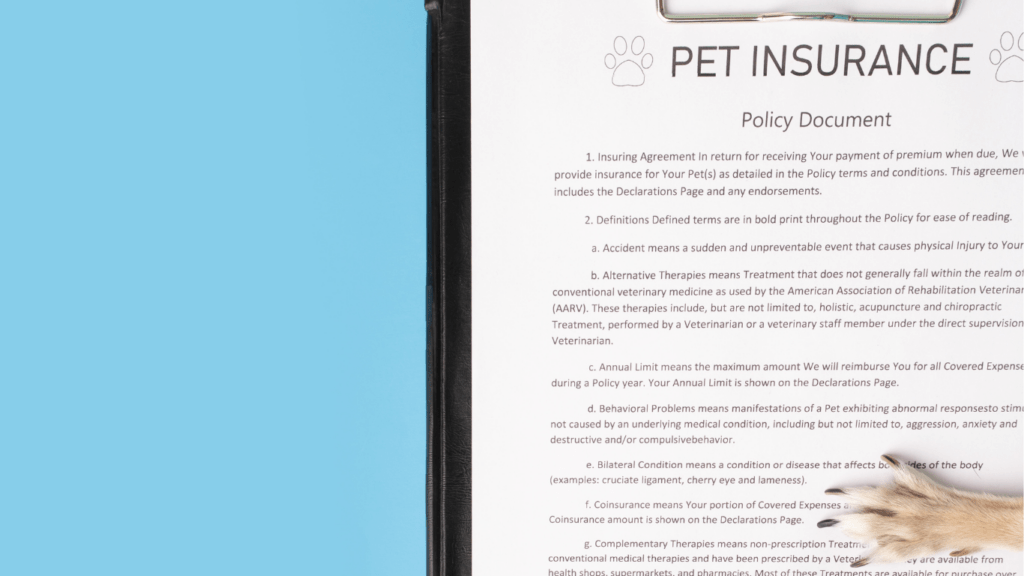What Is Pet Insurance?
Pet insurance helps pet owners cover the cost of veterinary care. Similar to health insurance for humans, it provides peace of mind by mitigating unexpected medical expenses.
Types of Pet Insurance
Pet insurance comes in various types, each offering different coverage scopes.
- Accident-Only Policies: These plans cover injuries from accidents, such as fractures or ingestion of foreign objects.
- Accident and Illness Policies: These comprehensive plans cover both accidents and illnesses, including chronic conditions like diabetes.
- Wellness Plans: These add-ons cover routine care like vaccinations, flea treatments, and annual exams.
Common Coverage Options
Common coverage options vary but generally include several key areas.
- Emergency Care: Covers emergency vet visits and treatments, including surgeries and hospitalization.
- Chronic Conditions: Covers ongoing treatment for chronic illnesses like arthritis or allergies.
- Hereditary and Congenital Conditions: Includes coverage for breed-specific conditions, such as hip dysplasia in dogs.
- Diagnostic Tests: Covers the cost of diagnostic tests like X-rays, MRIs, and lab tests.
Pet insurance provides valuable financial support in managing veterinary costs, offering diverse plan types and coverage options to meet pet owners’ needs.
The Growing Popularity of Pet Insurance

Pet insurance has seen a substantial increase in demand over the last decade. More pet owners now realize its value in ensuring comprehensive care for their pets.
Historical Context
Pet insurance originated in Sweden in the late 19th century, but it entered the US market in 1982 when the first policy was issued for a famous canine. Historically, pet insurance was seen as a luxury, primarily available to high-income spenders. Available policies were limited, focusing mostly on dogs. Over time, coverage expanded to include cats and exotic pets, reflecting a growing recognition of pets as part of the family.
Recent Trends
Recent years have witnessed rapid growth in the pet insurance market. According to the North American Pet Health Insurance Association (NAPHIA), the industry has grown at an annual rate of nearly 18%. Factors driving this growth include rising veterinary costs, increased awareness of pet health, and the humanization of pets. Technological advancements have facilitated easier access to pet insurance options through online platforms. Today’s policies are more comprehensive, offering a range of coverage options to suit different needs and budgets.
Benefits of Pet Insurance
Pet insurance offers multiple advantages for pet owners. It ensures comprehensive care for pets while mitigating financial burdens.
Financial Security
Pet insurance provides financial security by covering a significant portion of veterinary costs. With policies reimbursing up to 90%, emergency treatments and surgeries become more affordable. For example, major accidents and illnesses often result in unexpected expenses. If an accident-only policy is in place, pet owners avoid substantial out-of-pocket costs. Assurance in financial stability allows owners to focus on their pets’ well-being, rather than worrying about expenses.
Access to Better Care
Insurance policies enhance access to better veterinary care. With coverage extending to specialized treatments and advanced medical procedures, pets receive a higher standard of care. Wellness plans often include preventive measures such as vaccinations and annual check-ups, ensuring pets stay healthy. Chronic conditions, which require ongoing treatment, are also covered under most comprehensive plans. This range of coverage ensures that pets receive the best possible medical attention.
Peace of Mind
Pet insurance offers peace of mind, knowing pets are protected against unforeseen medical issues. In emergencies, quick decision-making becomes possible without financial constraints, allowing immediate and adequate treatment. Owners maintain confidence in handling their pets’ health needs, even when unexpected illnesses or accidents arise. This assurance reduces stress, as owners know they have a plan in place for their pets’ health requirements.
Potential Drawbacks of Pet Insurance
Investing in pet insurance offers many benefits, but it’s important to recognize the potential drawbacks.
Cost Considerations
Pet insurance premiums might be costly, especially for older pets. Premium rates vary by pet type, age, and breed, often increasing as pets age or develop chronic conditions. Budgeting for premiums and potential out-of-pocket expenses is crucial before opting for insurance.
Limitations and Exclusions
Not all conditions are covered by pet insurance policies. Many exclude pre-existing conditions (like diabetes or arthritis) and may not cover routine visits or dental care. It’s essential to read the fine print of any policy to understand what’s included and what isn’t.
Claim Process Complications
The claim process for pet insurance can be cumbersome. Many insurers require detailed records and invoices, plus lengthy processing times. Immediate reimbursement is rare, meaning pet owners might need to cover expenses upfront. Understanding the claim protocol of any chosen insurer can avoid future frustrations.
Factors to Consider Before Purchasing
Several factors should be evaluated before purchasing pet insurance to ensure it meets both your needs and those of your pet.
Your Pet’s Health and Breed
Consider your pet’s current health status and breed-specific conditions. Certain breeds may be predisposed to specific illnesses or injuries. Research if your pet’s breed has high risks for health issues, as this affects insurance costs and coverage needs. Older pets or those with preexisting conditions might face higher premiums or limited coverage.
Coverage Needs
Identify the essential coverage types for your pet. Choose between accident-only, illness, or comprehensive plans. Accident-only plans cover sudden injuries, while illness plans include treatment for diseases. Comprehensive plans often offer the broadest coverage, including preventive care. Determine if you need routine care, dental care, or hereditary condition coverage.
Evaluating Providers
Assess different pet insurance providers for reputation and reliability. Look into customer reviews and industry ratings. Compare premiums, deductibles, reimbursement rates, and claim processing times. Ensure the provider doesn’t have extensive exclusions or limitations that might affect your claims. Check if they offer customizable plans that can be tailored to your specific requirements.
Consider these factors carefully to make an informed decision about pet insurance.
Real-Life Experiences
Pet insurance brings both successes and challenges. Real stories can help guide your decision.
Success Stories
Pet owners often share how insurance saved them from financial strain during emergencies. One dog owner had a $7,000 vet bill covered after their pet ingested a foreign object. Another cat owner faced a $4,500 surgery for a broken leg, with insurance covering 80% of the costs. These stories highlight the relief and protection insurance provides during unexpected health issues, ensuring pets receive necessary care without owners bearing hefty out-of-pocket expenses.
Challenges Faced by Pet Owners
Not all pet insurance experiences are positive. Some owners face claim denials due to pre-existing conditions or coverage exclusions. For instance, one owner couldn’t claim a $2,000 bill for their dog’s hereditary condition. Others encounter lengthy claim processes, delaying reimbursement. Premium increases over time also pose challenges, making it crucial to read policies carefully and understand all terms before commitment.



 Pet Travel & Safety Consultant
Jimmy Dixoneser is the go-to expert on pet travel and safety at Pet Paw Shack. He provides valuable guidance on how to ensure pets are safe, comfortable, and stress-free when traveling. From creating checklists for pet-friendly vacations to advising on the best travel gear, Jimmy’s expertise helps pet owners confidently navigate adventures with their pets, whether on the road or in the air.
Pet Travel & Safety Consultant
Jimmy Dixoneser is the go-to expert on pet travel and safety at Pet Paw Shack. He provides valuable guidance on how to ensure pets are safe, comfortable, and stress-free when traveling. From creating checklists for pet-friendly vacations to advising on the best travel gear, Jimmy’s expertise helps pet owners confidently navigate adventures with their pets, whether on the road or in the air.
